We want to write about the place we live in as a way to know it more fully and to honor it and the people who call the place home. But what if the city you live in is less a character than it is an idea? What if it’s mostly empty space?
Oklahoma City came into being one morning in 1889 as part of the opening of the Unassigned Lands of Indian Territory, an act of collective desire and imagination and theft. Today, it is known for the oil and gas business, for the thunderstorms, for the downtown bombing that killed 168 in 1995. It is a place of possibility and violence. There are more lives here than you think.
What does it mean to want to belong to a place that has only existed for a few generations, for a blink of the world’s eye?
Oklahoma City is America. There is a significant Native presence here, significant immigrant communities. A strip-mall Indian grocery store, a strip-mall African grocery store, an Asian grocery store the size of a grocery store, a chain of Mexican grocery stores the size of grocery stores. Old outer neighborhoods of weedy, haphazard sprawl; new outer neighborhoods of developments of identical McMansions and expensive chain restaurants that are the product of purposeful white flight. A gleaming downtown business district that empties at the end of the workday and becomes a gleaming abandoned spaceship, with a new nearly riderless streetcar system. A couple dining and shopping districts with many options for Thunder T-shirts and artisanal cheeseburgers. A couple excellent bookstores. The smell of barbeque, vaped pot. Crows, churches. An on-ramp closed because of an overturned semi. A burned warehouse collapsing in on itself. In the old money neighborhoods, actual mansions with automatic sprinklers left on during the rain, during the ice; hundreds of trucks with lawn-care trailers to take care of the hundreds of immaculate lawns. An infinity of pot dispensaries with clever names: Fireleaf, House of Dank. An infinity of new enormous gas station/convenience stores–inside each one, immaculate restrooms, a walk-in beer cave with 30 packs of the cheap stuff, six packs of thick bitter craft beer with ironic cartoons on the label. Just past the underpass, a homeless encampment, tarped tents pressed into the side of an abandoned tire shop, smartly out of the wind. Beautiful day, no one outside. Sonic, Braum’s, Arby’s, McDonald’s, Taco Bueno, Taco Bell, Burger King, Wendy’s, Panda Express, Church’s, Golden Chicken, Kentucky Fried Chicken, Whataburger, Braum’s, Sonic.
There were already more drive-thrus in Oklahoma City than anywhere else I have ever been–not only every fast-food restaurant, but some of the regular restaurants, every coffeeshop. Convenience stores: milk and cigarettes and beer. Oil changes. Then the pandemic hit, and Walmart and Target and everywhere started offering drive-up service. Now, there are grocery stores without windows: drive into a bay, open your trunk, be filled. You never have to get out of your car.
Driving in Oklahoma City is both logical and disorienting, even dreamlike. The grid is absolute: numbers, quadrants, like a piece of graph paper the size of the world. The named main north/south streets start farther south than you have ever been, cut through the center of the city, or at least across the river and the long strip of furniture warehouses, then track all the way farther north than you have ever been. You always know exactly where you are; the problem is that you could be anywhere. Which giant Baptist church with three white vans in the lot next to the fenced-in playground was that? Which daycare in the old Pizza Hut? Which Lowe’s? At the corner there’s a Dunkin’ Donuts, a man with a dog and a few words on a cardboard sign. It feels like you should have hit the highway by now. There’s an entrance to a new walled-in development of a million houses with identical roofs on the left, on the right rumpled empty land for sale. The sky is an ocean of silence. At the farthest limit of the vast distance, a CVS.
I’ve only lived in Oklahoma City for ten years, but in those ten years, a new city has been superimposed onto the city I moved into. An enormous highway reconstruction project transformed a crammed bottleneck cloverleaf into a spacious outflowing of highway tendrils and lifted the passing trains into the sky. Some downtown parking lots, whole blocks of vague auto-body shops and the gray-faced convention center were transformed into a new sleek convention center with impressive, off-kilter waterfalls of windows and Star Trek neon-light accents, a luxury hotel with attached luxury steakhouse, new blocks of greenspace and parks so designed that visiting one feels like walking in a landscape architect’s rendering.
I’m aware of how silly some of this must sound to a person who feels simply planted in Oklahoma City, in this one real city in this one real country on the one real earth, to a person whose parents live here, whose grandparents died here. Everyone is from someplace. I’m aware of how silly it is to imply that Oklahoma City is a collection of ephemeral semi-places; if I had grown up somewhere out in Oklahoma, dreaming through nights of vast prairie darkness, Oklahoma City would have been “the city,” distant light on the horizon, danger and change.
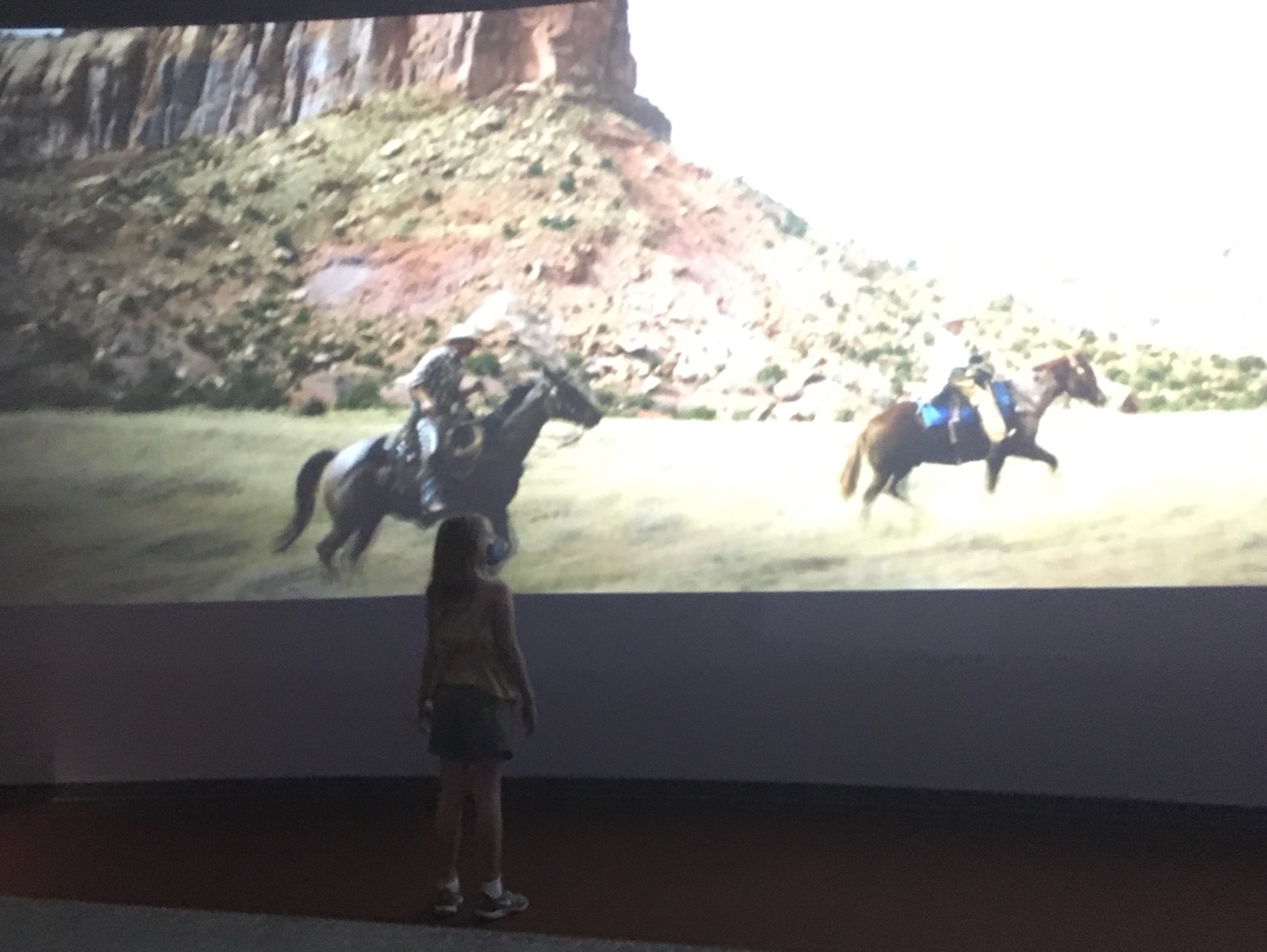
There’s recent criticism of the trend in some contemporary essays, such as this one, to grope their way forward or outward in tentative, self-conscious fragments. The overall argument is that reliance on ambivalence and loose observations and questions is less useful technique, or even effort to mirror reality, than it is a kind of aesthetic laziness, a kind of dodging responsibility, a kind of giving up. I don’t mean to give up or dodge responsibility. I do think fragments can be an authentic response to experience, a way to let a voice that wants to speak find form, a method to allow for contemplation, even as they are also the product of frustration and confusion. I don’t think I can make a story out of my time in Oklahoma City. I don’t think I can make a story out of Oklahoma City—there’s too much in it, too many pieces that can’t be gathered together, and the city, the grid, is still expanding, this second. Someone somewhere on the outskirts of the outskirts of Oklahoma City nails a sign heralding a new 7/11 (with attached Taco Laredo) Coming Soon into bare earth. The story of Oklahoma City, if there is a story, is not one whole, not in a photograph of the outline of the city seen from satellite, but all the stories that live within each individual square of the grid. In the same way, a life is not years, but a series of days; the meaningful unit of prose is the paragraph, not the book and certainly not the library.
Every day, I’m in the car for a few hours, in traffic, on highways so familiar to me they disappear as I travel, despite whatever I might insist on about the worth and beauty of every moment, every intersection.
I meet a lot of people in Oklahoma City who are not from Oklahoma City. Part of this is because I and my colleagues work in higher education, which often requires a willingness to hurl yourself and your family across the country to a new city in pursuit of a career with a livable wage (and I am one of the extremely lucky ones who was able to find that). And part of this is because of the city itself. I-35 and I-40—great North-South and East-West highways—cross here. Oklahoma City is easy to get to, and it’s easy to find a corner to occupy here, a socket to plug into. Therefore, it should be easy to leave Oklahoma City; I’m not sure if that’s true.
Though Oklahoma’s politics are dominated by far-right Christianists who believe, and say out loud, that the state belongs to people like them alone, Oklahoma City itself is becoming more and more purple, with a go-along-to-get-along let’s-build-stuff-and-ok-also-some-new-parks ethos. There are culturally deep blue districts in the city itself: bike lanes, gay bars, vegan restaurants. Most days the city feels, to me, like any other place I’ve lived. I go to work; I come home and cook the food I’ve purchased for my family. It’s easy enough for me to live like politics isn’t real. But I’ve never had to seek out an abortion. I’ve never been afraid to be stopped by police at night. I’ve never had to find a meal I couldn’t pay for. What do I really know about where I live?
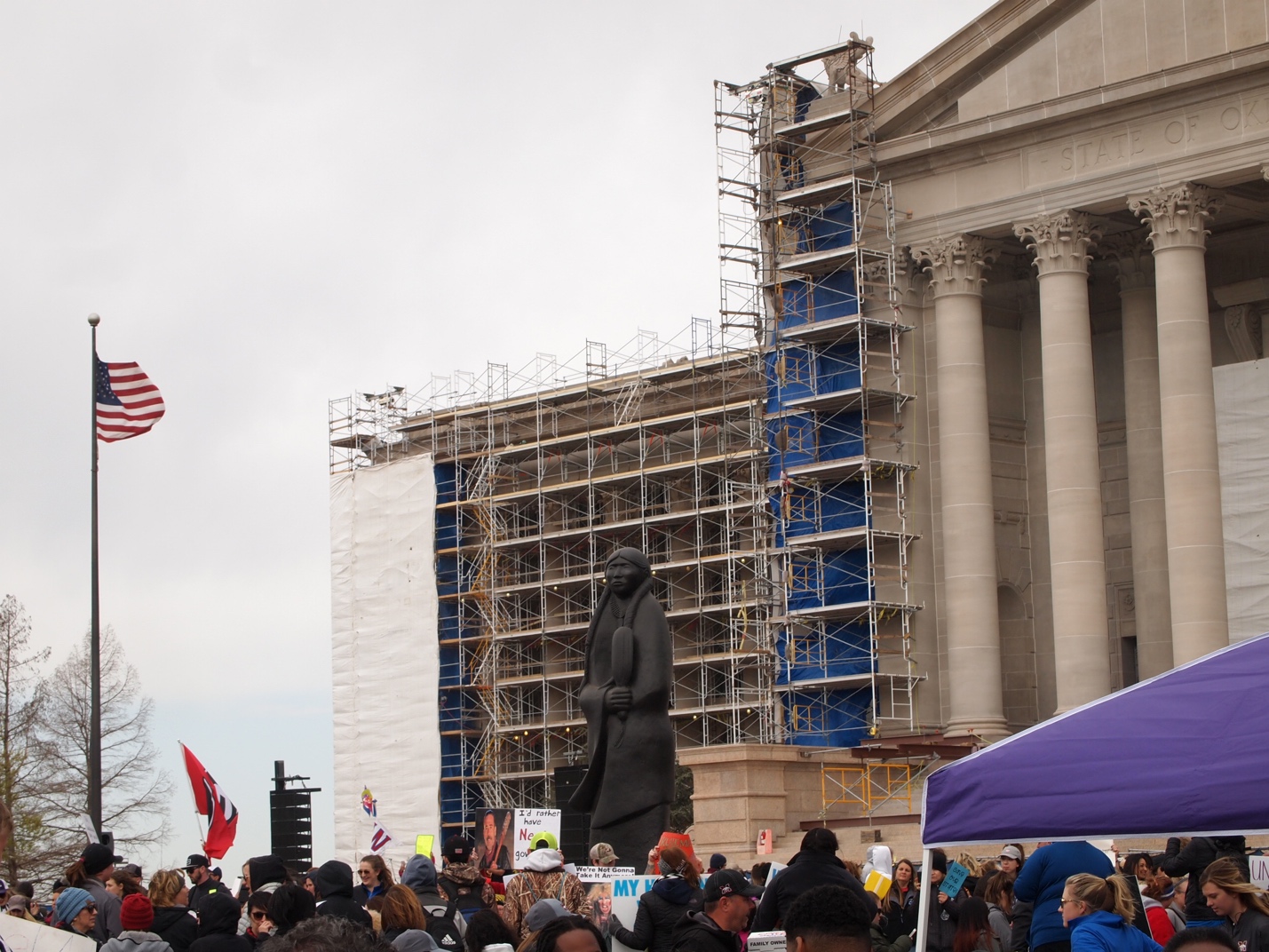
I hate what the first-person sounds like in an essay, or maybe I just hate the sound of my own voice. It sounds especially silly in an essay about Oklahoma City, whose two main facts—sky and highway—encourage silence and motion, not declaration.
And so: this paragraph is about God. I grew up a small-town altar-boy Catholic, accepting of the gravity of the mysterious repeated words and ceremonies I participated in and knew by heart but didn’t understand. When I grew up and read many learned books, I put aside religion with the rest of my childish things, like fear of the dark, and dreams about basketball. I believed I could see the stories of the Bible as stories; I believed I could see the beauty of the mysterious repeated words and of the ceremony and of late daylight through stained-glass windows as only language and music and color. But I was wrong. It’s taken me a lifetime to see that trying to stand outside beauty doesn’t diminish it to something merely understandable. And that a story is not the same thing as a lie. And I’m still afraid of the dark, and I still dream about basketball. The path isn’t, as I believed, to absorb language and let it structure my understanding of the world. The path is to work the other direction: from the world to the language. A story is not a map, it’s a reaching out, a cry.
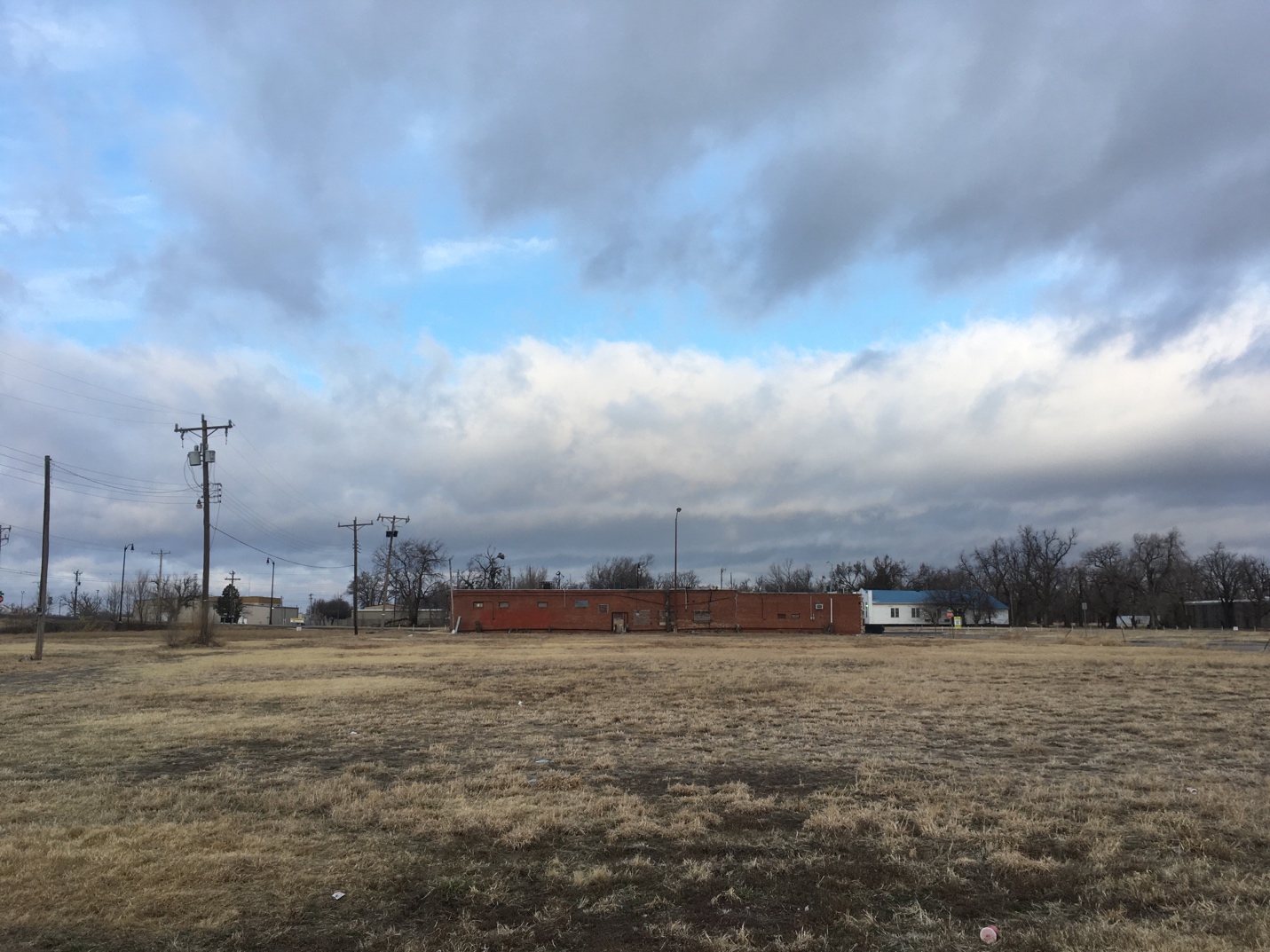
I’m much better at reading stories deeply than I am at writing about them, or even thinking about them. For better or worse, I don’t experience stories, fictional or not, as about life; I experience them as life itself. And, so, my writing about stories often no more takes a coherent shape than the moods and ideas of a day do. In the same way, I’ve never understood the distinction between a classroom and “the real world.” Every story is part of life; everywhere in the world is in the world. I wouldn’t say I write stories to process being alive; I would say I write to be alive, to be a person who is going to die as fully and deeply as I can. The question of stories is the same as the question of living. The parking lot of the CVS at the intersection of May and 122nd in Oklahoma City is not nowhere.
I’ve become interested in the story of very early Christianity. Whatever you believe about what happened in those years, it’s true that at first it was not the story of very early Christianity. It was something happening. It took place in nowhere cities. Jesus sailed back and forth across nowhere lakes, walked along nowhere roads. If it happened today, it would not take place in Manhattan or Paris. He’d get angry at his friends on the highway for falling asleep in the car when they were supposed to be giving him directions. He’d give a handful of change to the panhandler standing on the median with a few words written on a scrap of cardboard. He’d say something funny that didn’t make sense at first. The ice cream machine at the McDonald’s with the storm-damaged sign would turn out to be working. The tornado would lift off the ground just before city limits. He’d be on the outskirts of Oklahoma City.
We learn and are taught language as we learn and are taught about the world and experience, so it can seem like language itself is how we learn about the world and experience. We point out the armadillo to our child and say the word “armadillo” and the armadillo becomes real. This process feels so natural and so powerful that, as we age, it becomes more than possible to not be able to see the world, but only the names of the parts of the world, and believe you are living in the world. To write about place means, if it is possible, and I wish it is possible, to see the world and write it into language, as if for the first time. Oklahoma City is not Oklahoma City.
One of the true things about supposedly superficial rootless America is that we actually do have a classical national literature to draw from and stand on and argue with. 1850s Massachusetts and New York City while the Civil War was still, barely, the future: Emerson, Thoreau, Hawthorne, Melville, Whitman, Dickinson. What they shared, what our uneasy inheritance is, is faith in (and, sometimes, fear of) the possibilities of the individual consciousness confronted with the beauty and silences of time and nature, and the necessity of the confrontation. Emerson discovered divinity and unity, for example; Whitman discovered people, and himself; Dickinson discovered questions.
Thoreau discovered place. Walden is not about conquering some abstract manly wilderness—it’s the record of an awkward, gentle, pedantic guy walking in the woods on the edge of his town looking at trees. It’s about bugs and seasons. It’s about the infinite and various world available within walking distance, the space a person can—and crucially, in terms of his politics, should—occupy. He shared Emerson’s affection for and confidence in his own enormous ideas, but he keeps his fingers always in the local earth. His eyeball isn’t transparent, but full of the goo and nerve that give us sight. He died early in the Civil War, too young. I want to know what he would have written about the Civil War, the end of slavery; his beautiful and ballistically angry defense of John Brown suggests unwritten books. I want to know what he would have written about the woods when he was too old to confidentially stomp through them. I want to know what he would have noticed about the parking lot of the CVS at the intersection of May and 122nd in Oklahoma City.
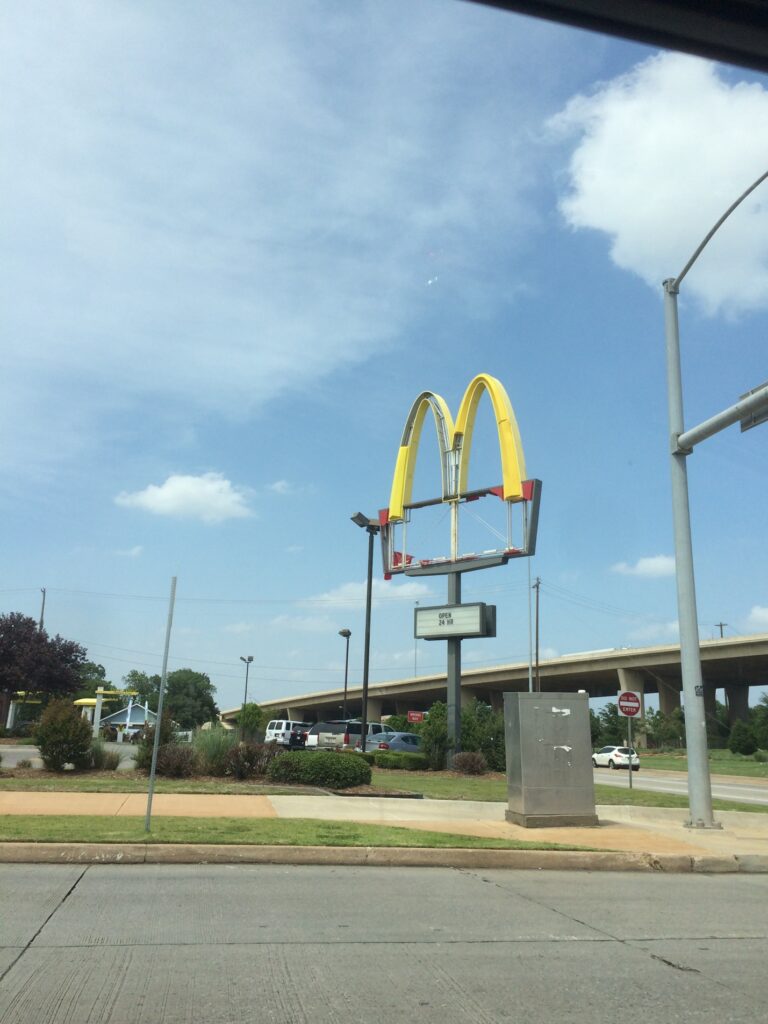
I am aware of a general current movement in defense of localism or regionalism in the arts as well as in life. And I agree with it, in spirit. I appreciate its values of honoring the past, of community. I do think that sunset in the stained glass in the little church on the hill is just as worthy of aesthetic contemplation as an air-conditioned and alarmed Walmart-sized white cube whose walls are plastered with twenty-million dollar Rothkos, or more worthy, even, because of the direct connection to daily lived experience. We should observe and tend to the familiar trees in the woods at the edge of town, not only read about climate change on the internet. We should care for the people we interact with every day, not only hate the powerful men in suits on television. But how much does it matter if the place you live isn’t your choice? (To say nothing of what if the place you want to claim won’t claim you.) If there’s any landscape that shaped my imagination, it’s not the skies and distances of Oklahoma, but the hilly, rocky, pine-needled woods of small-town Massachusetts, where I was young. I don’t feel at home under Oklahoma sky; I feel exposed. What if you can’t live in the place where your imagination feels at home? What if you can’t ever stay in one place long enough to grow roots? What if you have to drive through fast-food-lined headache traffic for an hour a day to get your children to school? Is the solution to find the value in the joke on the Carl’s Jr sign? Is it to be friendly to the stranger in the grocery store? Is it to more intensely contemplate the size of the sky?
It’s important to acknowledge how much strip-mall gas station landscape there is in Oklahoma City; it would be a lie not to. And it would also be a lie to not acknowledge that there is so much beauty here. The winters are windy, and the bare trees and streets and faces of buildings look blasted smooth. When it is cold and clear there is so much light and the wind is so clean. In the spring, there is a wash of purple clovery growth across lawns and vacant lots before even the dogwoods bloom. Storms are wild dark cathedrals the sky builds. There’s picnic tables in the Methodist church parking lot; there’s elegant hand-painted yellow letters on the side of the taco truck; there’s booming music from the cherry-red pickup with tinted windows. There’s Mississippi Kites circling above the broken white oaks in the park.
I don’t belong here, but I live here.
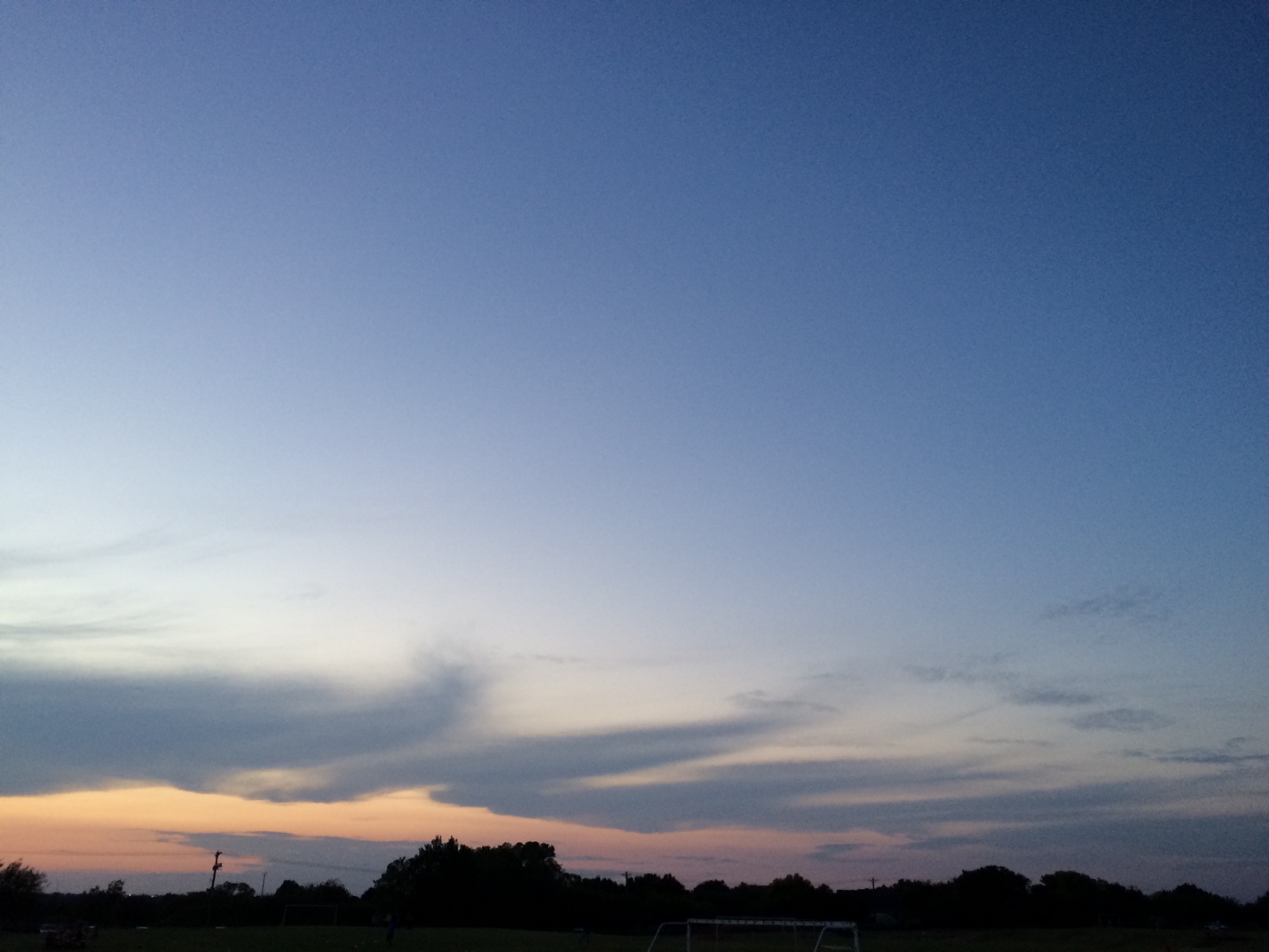

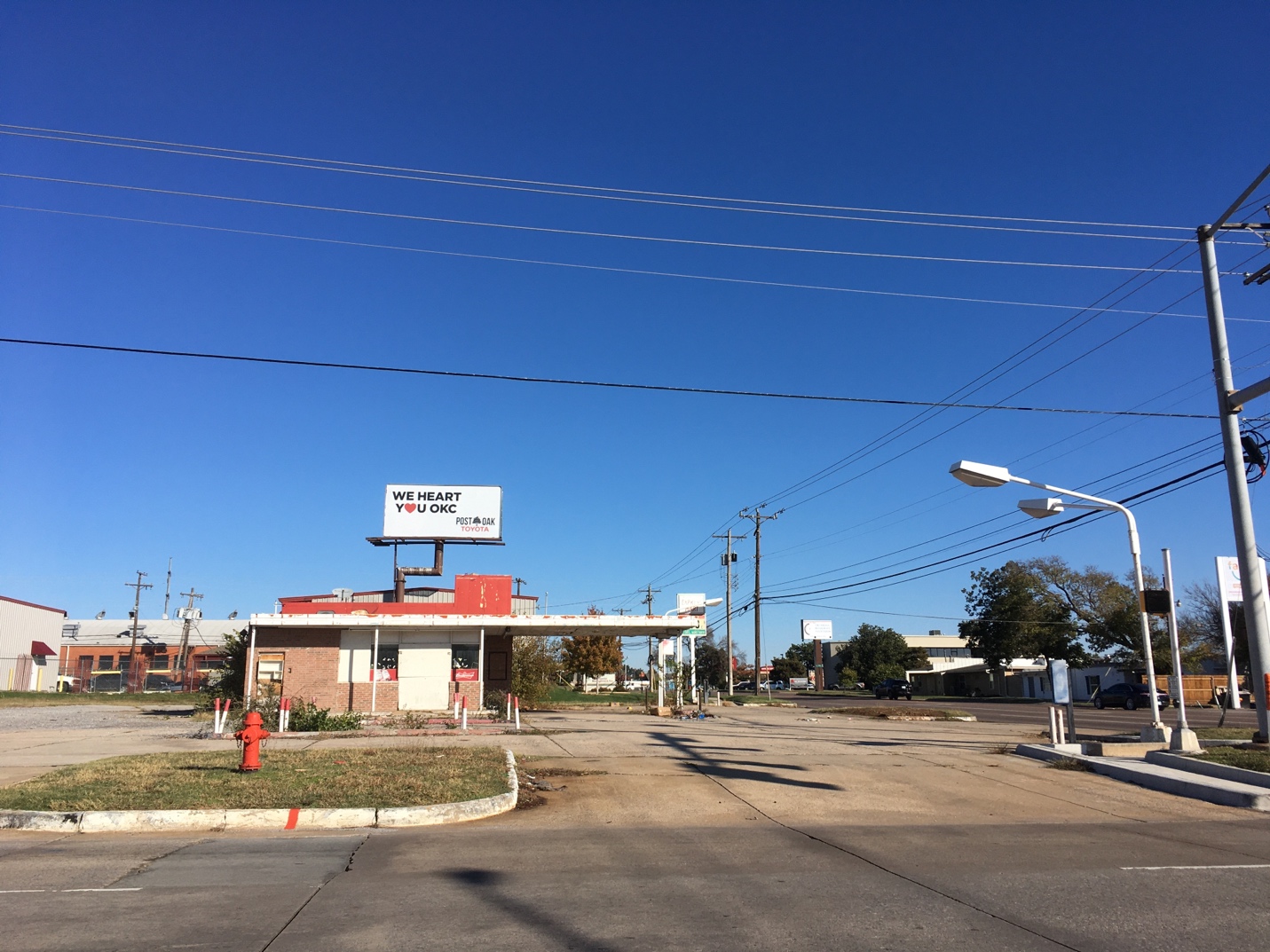

8 comments
Dan Grubbs
I was an occasional visitor to OKC because of the amazing boathouse district. I used to race kayaks and the facilities in OKC are world class. If anyone ever finds themselves in OKC, I ask that you depart from Bricktown for an afternoon and head over to the boathouse district. You’ll be amazed there is an Olympic rowing and kayaking facility … who knew, right?
Sean S
After having transplanted here for nearly the same amount of time, I too, found this to be very relatable. This essay piece resonates with me personally, quite well.
David Schneider
This essay resurrected a lot of emotions. I am also transplant. Oklahoma City feels like a temporary stop on one’s professional journey. And when your resources for mobility or exhausted, it grows into home and purgatory at the same time, nothing in between.
Dan Grubbs
Place is a monstrously large idea for us to grapple with. As a 61-year student of life on this planet, in this country, in the Midwest, I have contemplated place intently for a significant portion of my studies. As a boy growing up in an idyllic setting I was focused on the dandelion with six stems, the knot on a Dutch elm, and the resonating orchestra of the cicada.
After seeing the film My Side of the Mountain at age 10 my world changed and the imagined wilderness of other places became fantasy. The desire to experience these other places was stoked by Mutual of Omaha’s Wild Kingdom and many nature films shown in elementary school made by Disney Studios. I longed for other places than the one I was in.
This longing took me many places in the world; other countries and other landscapes and other cultures. Yet, all the while I have always felt strongly about defending my original place when I hear or read of others deriding it. When I hear terms like “flyover” or “wasteland” it used to bother me and I have come to understand these viewpoints come from people who do not appreciate the fact that different does not mean lesser. I love the mountains. But I also love the tall-grass prairie just as much. The coastline offers much, but no more so than the Great Plains. The Ozarks are just as amazing as a Pensacola beach. The teeming life in one cubic foot of healthy soil is just as important as the teeming nightlife of Manhattan … maybe more!
I hope we can all come to a place in our lives when we realize one place is not better than the other, just different.
Mark Griffin
Beautiful essay Rob; One that I’ll be pondering for a while. You capture what many of us have experienced living here as “transplants.” A place that can seem bland, monotonous, and occasionally awe-inspiring; Bible-belt and oddly libertarian. Like you, I miss woodlands (and mountains, even hills) and I seek out pockets (along rivers and creeks especially) where the landscape has more contours and trees. Great job capturing all this!
Harry Angell
I feel empty, liminal spaces are frightful. The haunted house is haunted because it is occupied; the occupants matter. So many corners of oblivion, gritty broken asphalt and grains of glass. I feel drawn to the haunted mansion. I am repelled by abandoned concrete and cheap drywall.
Linda S
I am deeply touched by what you have written.
R Lance
I recently visited for the first time. Although we didn’t have time to explore we did enjoy a concert at Armstrong Auditorium in Edmond and discovered Archives Books. Next time we plan to stay longer and maybe find your recommended bookstores. Great food as well.
Comments are closed.